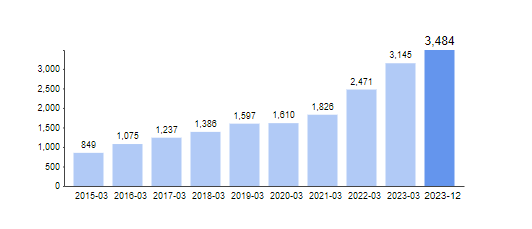20 Pro Ideas For Deciding On Best Ai Etf Websites
20 Pro Ideas For Deciding On Best Ai Etf Websites
Blog Article
Top 10 Suggestions On How To Assess The Strategy Customization Of Ai Trading Platforms
It is important to note that AI trading platforms that incorporate predictive analysis of stocks are able to offer users the option of customizing their platform to meet their goals in trading, risk tolerances, and market conditions. A platform that has a range of customization features will enhance your trading. Here are the top 10 strategies for evaluating the customizable options available on these platforms.
1. Evaluate Pre-Built Strategy Templates
A variety of templates to choose from - Check to see if there's pre-built strategies that cater for various trading styles.
Easy to use: Check the ease of use required to apply and modify these templates to suit your requirements.
Performance history: See whether you have access to historical data of the performance of pre-built strategies.
2. Create a Custom Strategy
Drag-and-drop applications: Search for platforms that provide an intuitive drag and drop interface for customizing strategies.
Coding options: For users who are more advanced, check if the platform allows custom coding in proprietary scripting language (e.g. Python, R).
Flexibility: Make sure the platform allows you to define entry/exit rules as well as risk management parameters and other key components of your plan.
3. Check for Backtesting Capabilities
Data historical: Check if there are enough data to backtest your strategies.
Adjustable parameters: Ensure that you are able to adjust parameters (e.g. timespans, timeframes or indicators) in the course of backtesting.
Performance metrics: Find out whether the platform provides specific performance metrics for backtested strategies (e.g. win rate Sharpe ratio drawdown, etc.).
4. Evaluate Real-Time Strategy Testing
Paper trading: Ensure the platform provides the option of paper trading or simulation to test strategies in real time without the risk of losing capital.
Live testing - See if you can test strategies using tiny amounts to test how they work.
Real-time adjustments: Verify whether you are able to tweak strategies in real-time, based on market conditions.
5. Examine the degree of integration using technological indicators
Library of indicators: Find out if the platform offers an extensive collection of technical indicators (e.g. Moving averages, RSI, MACD).
Custom indicators: Ensure you are able to import or design custom indicators for your plans.
Verify the indicators' combination.
6. Check for Risk Management Tools
Stop-loss/take-profit: Ensure the platform allows you to set stop-loss and take-profit levels within your strategies.
Sizing your positions. Make sure you have defined rules on the best way to handle your risk (e.g. set amount or percentage of your portfolio).
Risk-reward: Find out if your platform lets you determine risk-rewards for each strategy or trade.
7. Evaluate Multi-Asset Strategy Support
Asset classes: Check that the platform can handle various asset classes like ETFs, stocks and options.
Cross-asset Strategies: Determine whether it is possible to develop strategies that combine different asset classes.
Market coverage: Determine whether the platform has the services you require (e.g. US, international or copyright).
8. Evaluate Automation and Execution
Automated trading - Ensure that the platform can be capable of automating strategies based upon defined rules.
Types of orders: Ensure that the platform is able to run different order types, such as stop, limit and market.
Check for latency: Make sure that the platform is able to allow trades to be executed with the least amount of delay. This is especially important for high-frequency strategy.
9. Look for tools to optimize your strategy.
Parameter optimization - Make sure that the platform includes tools to optimize your strategy's parameters.
Machine learning: Make sure the platform you choose to use has machine learning that can be integrated to improve and optimize strategies.
Analysis of scenarios: Check whether the platform permits testing strategies under different market scenarios (e.g. bull, bear, volatile).
Read the Community Feedback and User Reviews
User feedback Conduct research on users to evaluate the effectiveness of the platform for customizing strategies.
Forums for community members. Verify if members are able to share and discuss their ideas in a vibrant community.
Support resources for users - Make sure that the platform has guides and instructions to help users create and enhance strategies.
Bonus Tips:
Trial period: Test the customization options of the platform without cost with a demo or demo.
Scalability is important. The platform should be able handle strategies that become more complex as you trade.
Support for customers: Check if the platform offers assistance for issues related to strategy or concerns.
By following these tips you will be able to effectively evaluate the ability to tailor strategies for AI platforms for analyzing and predicting stocks, ensuring you choose a platform that aligns with your objectives in trading and allows you to apply and refine your strategies effectively. A platform that has robust customization capabilities can allow you to adapt to market conditions and enhance your trading performance. Have a look at the recommended ai investment platform advice for blog tips including ai stock trading app, ai trading software, ai stock trading, getstocks ai, stock analysis websites, ai trading bot, stock analysis websites, best stock analysis website, ai copyright trading bot, trading chart ai and more.
Top 10 Suggestions For Evaluating The Community And Social Features Of Ai Stock Trading Platforms
Knowing how users share information, interact and grow is vital to understanding the AI-driven trading as well as stock prediction platforms. These features can enhance the user's experience as well as provide useful assistance. Here are the top ten tips to assess social and community aspects on such platforms.
1. Active User Community
Tips: Make sure the platform has an active user base that regularly engages in discussions, provides insights and offers feedback.
Why: A community that is active indicates a vibrant environment in which users can develop and learn from one another.
2. Discussion Forums, Boards, and Discussion Forums
Tip: Evaluate the level of activity and quality of discussion forums or message boards.
Why: Forums enable members to talk about market trends or ask questions, and also share strategies.
3. Social Media Integration
Tip: Check if your platform integrates with other social media platforms such as Twitter and LinkedIn for sharing updates and insights.
Why: Social media integration can increase engagement and offer actual-time market information.
4. User-Generated Materials
Find features that allow users to create, share, and edit content.
Why: User generated content fosters collaboration and provides a diverse perspective.
5. Expert Contributions
Tips: Make sure that the platform has contributions from experts in their field, such as AI or market analysts.
Expert knowledge adds authenticity and depth to discussions within communities.
6. Real-time chat and messaging
Find out if there is instant messaging or chat features that allow users to communicate instantaneously.
Why? Real-time interactions facilitate quick information exchange and collaborative work.
7. Community Modulation and Support
Tips: Determine the degree and kind of support that is offered by your community (e.g. moderators or customer service representatives).
What's the reason Positive and respectful environment is created by effective moderation. Customer assistance quickly solves issues for users.
8. Webinars and events
TIP: Make sure to check whether the platform is hosting events, webinars or live Q&A with experts.
What are the benefits: These events provide opportunities to learn and direct contact with industry professionals.
9. User Feedback and Reviews
Look for platforms that let users leave reviews or feedback on their community features and platform.
Why? User feedback helps determine strengths in the community's ecosystem as well as areas to improve.
10. Rewards and gaming
Tips. Find out if the platform offers gamification components (e.g. leaderboards, leaderboards or badges) along with incentives for engagement.
Gamification is an effective way to increase engagement of users in the online community.
Tips for Privacy & Security
Be sure to use robust privacy measures and security when using the social and community features. This will protect your data and interactions.
These aspects will help you determine whether a platform for trading or AI stock prediction service provides a friendly and supportive community that can help you improve your trading skills and knowledge. Have a look at the recommended ai trading platform for site examples including ai trading, ai for stock trading, ai stock picker, ai for investing, trader ai review, ai copyright trading bot, ai investing, ai options trading, ai investing, ai stocks to invest in and more.